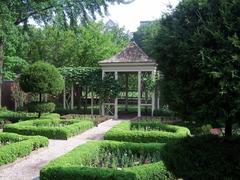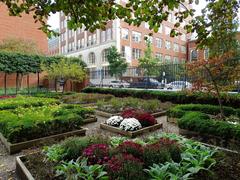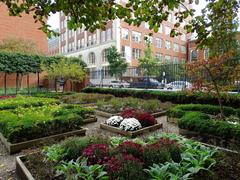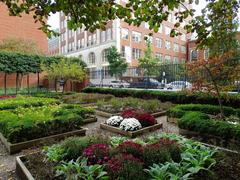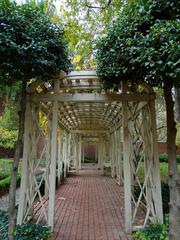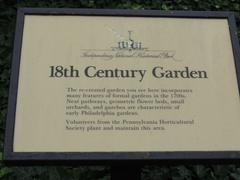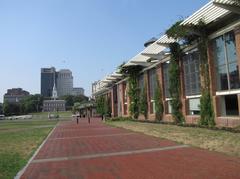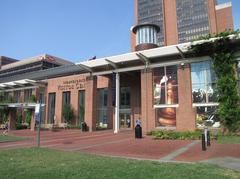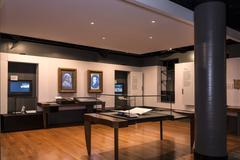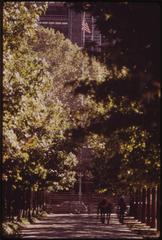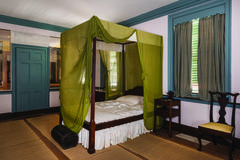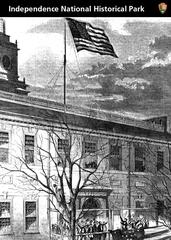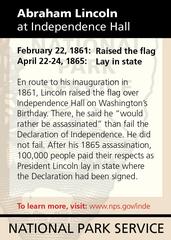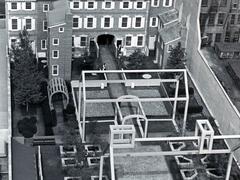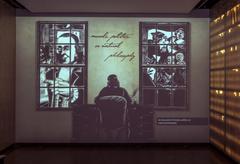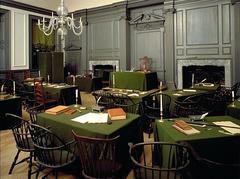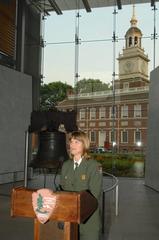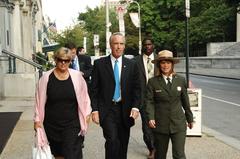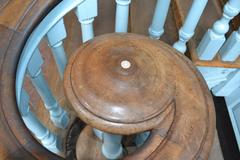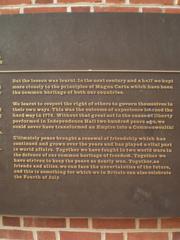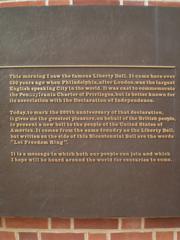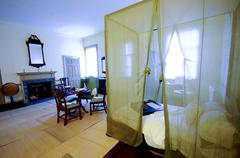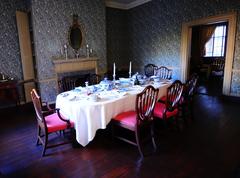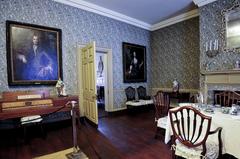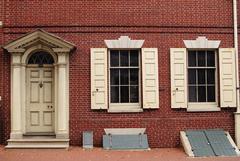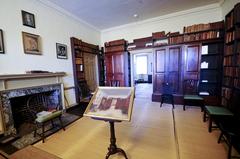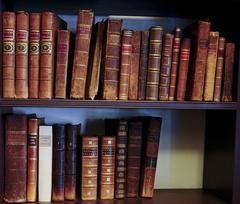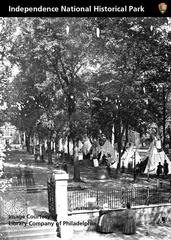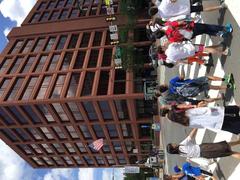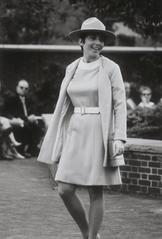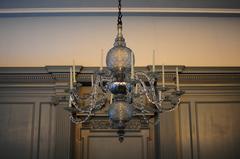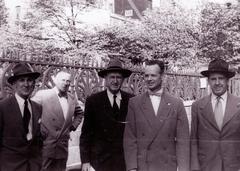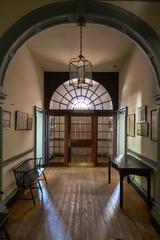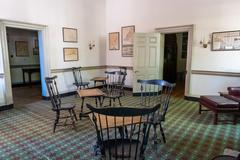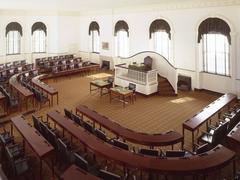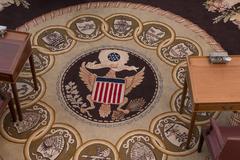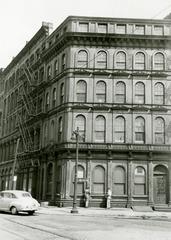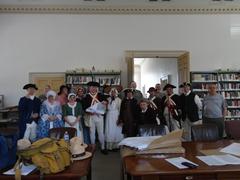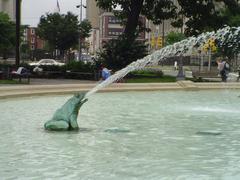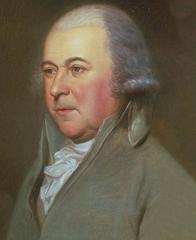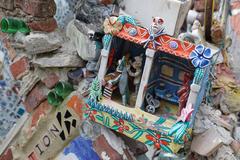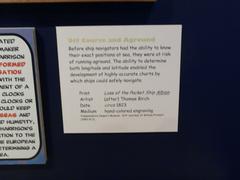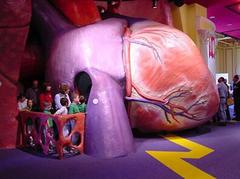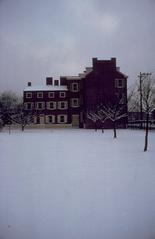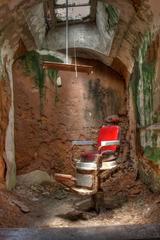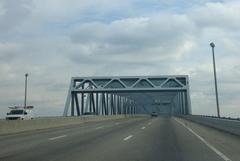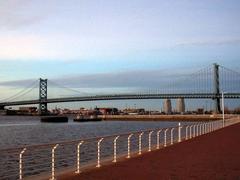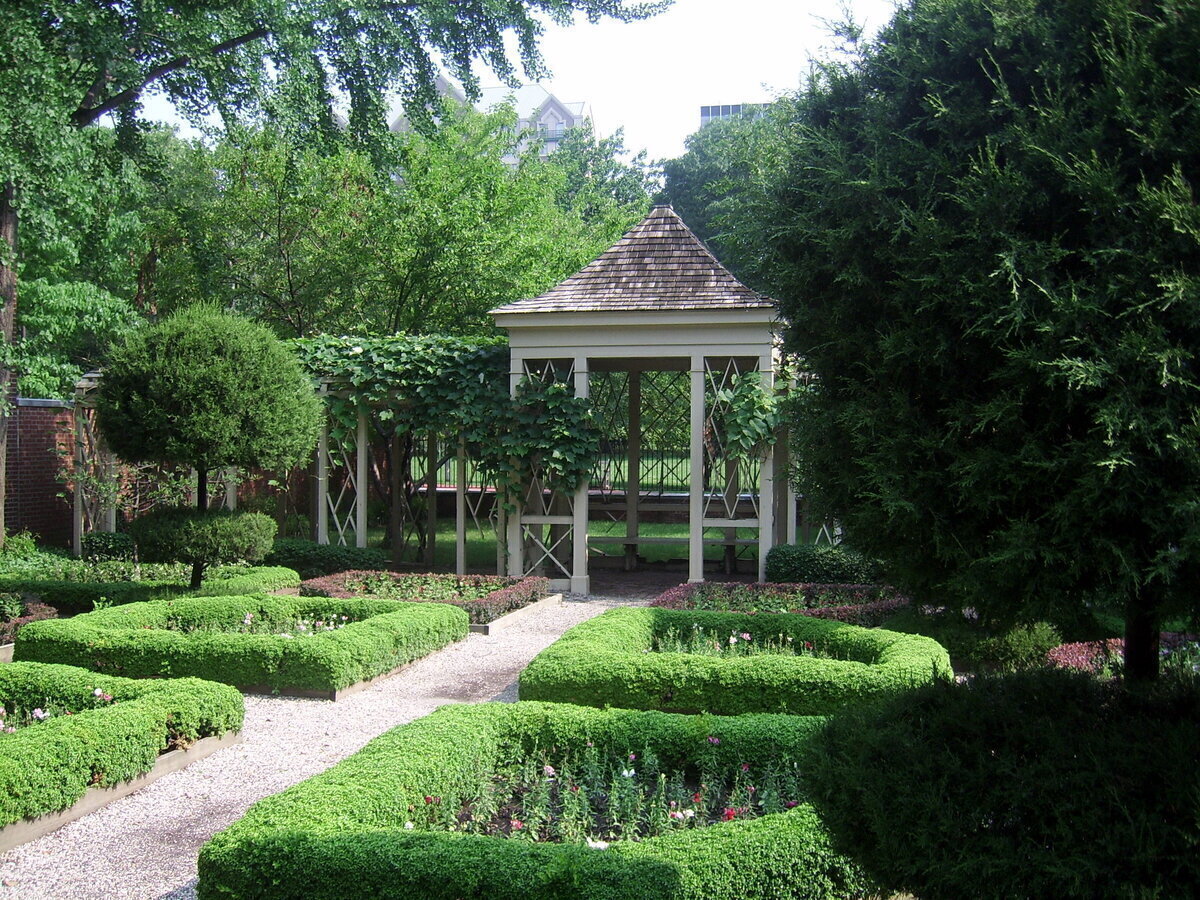
Comprehensive Guide to Visiting Independence National Historical Park Philadelphia United States
Date: 17/07/2024
Introduction
Independence National Historical Park in Philadelphia, Pennsylvania, stands as a beacon of American heritage and democracy. Often heralded as the ‘Birthplace of American Democracy,’ the park encompasses landmarks pivotal to the American Revolution and the formation of the United States. Central to this historical expanse is Independence Hall, the very site where the Declaration of Independence and the U.S. Constitution were debated and ratified. This guide offers an extensive exploration of the park’s history, visitor logistics, notable attractions, and practical advice for an enriching visit. Immerse yourself in the essence of American liberty and justice as you traverse the grounds once walked by the Founding Fathers (National Park Service).
Table of Contents
- History of Independence National Historical Park
- Visitor Information
- Nearby Attractions
- Special Features
- FAQ
- Conclusion
History of Independence National Historical Park
The Birthplace of American Independence
Independence National Historical Park is home to some of the most significant sites related to the American Revolution and the founding of the United States. The park’s centerpiece, Independence Hall, is where both the Declaration of Independence and the United States Constitution were debated and adopted.
Independence Hall
Independence Hall, originally known as the Pennsylvania State House, was constructed between 1732 and 1753. Designed by Edmund Woolley and Andrew Hamilton, it served as the meeting place for the Second Continental Congress from 1775 to 1783. The building’s Georgian architecture is a testament to the colonial era’s design aesthetics. On July 4, 1776, the Declaration of Independence was approved here, marking the birth of the nation. Later, in 1787, the Constitutional Convention convened in the same hall, resulting in the drafting of the U.S. Constitution (National Park Service).
The Liberty Bell
The Liberty Bell, an enduring symbol of American freedom, originally hung in the steeple of the Pennsylvania State House. Cast in 1752 by the Whitechapel Bell Foundry in London, it cracked upon its first test ring. It was recast twice by local founders John Pass and John Stow. The bell gained iconic status when it was adopted by abolitionists as a symbol of the anti-slavery movement in the 19th century. Today, it is housed in the Liberty Bell Center, where visitors can view the bell and learn about its storied past (Liberty Bell Center).
Congress Hall
Adjacent to Independence Hall is Congress Hall, which served as the meeting place for the United States Congress from 1790 to 1800, during Philadelphia’s tenure as the nation’s capital. It was here that the Bill of Rights was ratified, and both George Washington and John Adams were inaugurated as presidents. The building’s two chambers, the House of Representatives on the first floor and the Senate on the second, have been restored to their original appearance (Congress Hall).
Old City Hall
Old City Hall, located at the corner of 5th and Chestnut Streets, was the home of the U.S. Supreme Court from 1791 to 1800. The building’s simple Federal-style architecture reflects the early years of the republic. The Supreme Court met here until the nation’s capital moved to Washington, D.C. Today, Old City Hall is part of the Independence National Historical Park and offers visitors a glimpse into the early judicial history of the United States (Old City Hall).
The First Bank of the United States
The First Bank of the United States, chartered in 1791, was the brainchild of Alexander Hamilton, the first Secretary of the Treasury. The bank played a crucial role in stabilizing the young nation’s economy. The building, completed in 1797, is one of the finest examples of neoclassical architecture in the United States. Although the bank’s charter expired in 1811, the building remains a significant historical landmark (First Bank of the United States).
Carpenters’ Hall
Carpenters’ Hall, built in 1770, was the meeting place of the First Continental Congress in 1774. Delegates from twelve of the thirteen colonies gathered here to discuss their grievances against British rule and to plan a unified response. The hall is still owned and operated by the Carpenters’ Company of the City and County of Philadelphia, the oldest trade guild in America. Visitors can explore the building and learn about its role in the early stages of the American Revolution (Carpenters’ Hall).
Franklin Court
Franklin Court is the site of Benjamin Franklin’s home and print shop. Although the original structures no longer exist, the site features a steel ‘ghost structure’ outlining the footprint of Franklin’s house. The underground museum offers exhibits on Franklin’s life and achievements, including his work as a printer, inventor, and statesman. The site also includes a working replica of Franklin’s print shop, where visitors can see demonstrations of 18th-century printing techniques (Franklin Court).
The President’s House Site
The President’s House Site, located near Independence Hall, marks the location of the executive mansion where Presidents George Washington and John Adams lived during Philadelphia’s time as the nation’s capital. The site includes an open-air exhibit that explores the lives of the presidents, their families, and the enslaved people who worked in the house. The exhibit provides a comprehensive look at the complexities of the early presidency and the institution of slavery in America (President’s House Site).
Visitor Information
Ticket Prices and Visiting Hours
Independence National Historical Park is open year-round, but specific buildings may have varying hours of operation. Generally, the park is open from 9:00 AM to 5:00 PM. Admission to most sites within the park is free, but timed entry tickets are required for Independence Hall from March through December. These tickets can be reserved online or obtained on the day of the visit from the Independence Visitor Center.
Travel Tips
- Getting There: The park is easily accessible by public transportation, including SEPTA buses and trains. Parking is available but can be limited, so using public transit is recommended.
- What to Bring: Comfortable walking shoes, a camera, and a water bottle are essential for a day of exploring.
- Accessibility: The park is committed to accessibility, with many sites offering ramps, elevators, and accessible restrooms. The Independence Visitor Center provides additional resources for visitors with disabilities.
Nearby Attractions
Philadelphia is rich in historical and cultural sites. Nearby attractions include the National Constitution Center, the Museum of the American Revolution, and the Betsy Ross House. Combining visits to these sites with Independence National Historical Park can provide a comprehensive historical experience.
Special Features
Special Events
The park hosts various special events throughout the year, including reenactments, guided tours, and educational programs. Check the park’s official website for a calendar of upcoming events.
Photographic Spots
Some of the best photographic spots in the park include the iconic Liberty Bell, the exterior of Independence Hall, and the serene gardens surrounding the historic buildings. Don’t miss capturing the ‘ghost structure’ of Franklin Court for a unique photo opportunity.
FAQ
Q: What are the visiting hours for Independence National Historical Park?
A: The park is generally open from 9:00 AM to 5:00 PM, but specific buildings may have different hours.
Q: Do I need tickets to visit Independence Hall?
A: Yes, timed entry tickets are required for Independence Hall from March through December. These can be reserved online or obtained at the Independence Visitor Center.
Q: Is the park accessible to visitors with disabilities?
A: Yes, many sites within the park offer ramps, elevators, and accessible restrooms. Additional resources are available at the Independence Visitor Center.
Q: Are there guided tours available?
A: Yes, the park offers various guided tours that provide in-depth historical insights. Check the official website for more details.
Conclusion
Independence National Historical Park is not just a collection of historic buildings; it is a symbol of the American ideals of liberty, democracy, and justice. By visiting this park, tourists can walk in the footsteps of the Founding Fathers, explore the origins of American democracy, and gain a greater appreciation for the historical events that have shaped the United States. Plan your visit today to immerse yourself in the rich history of this iconic landmark.
For more updates and information, follow us on social media and check out our other related posts!
References
- National Park Service. Independence Hall. Retrieved from National Park Service
- Liberty Bell Center. Retrieved from National Park Service
- Congress Hall. Retrieved from National Park Service
- Old City Hall. Retrieved from National Park Service
- First Bank of the United States. Retrieved from National Park Service
- Carpenters’ Hall. Retrieved from National Park Service
- Franklin Court. Retrieved from National Park Service
- President’s House Site. Retrieved from National Park Service
